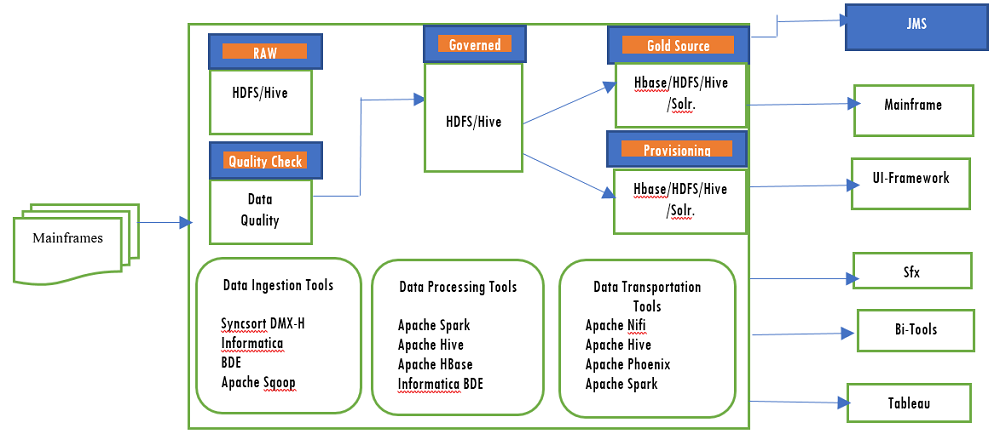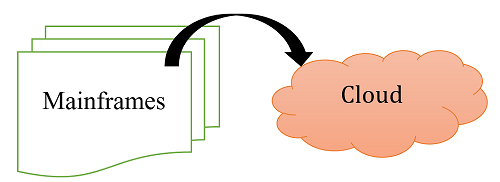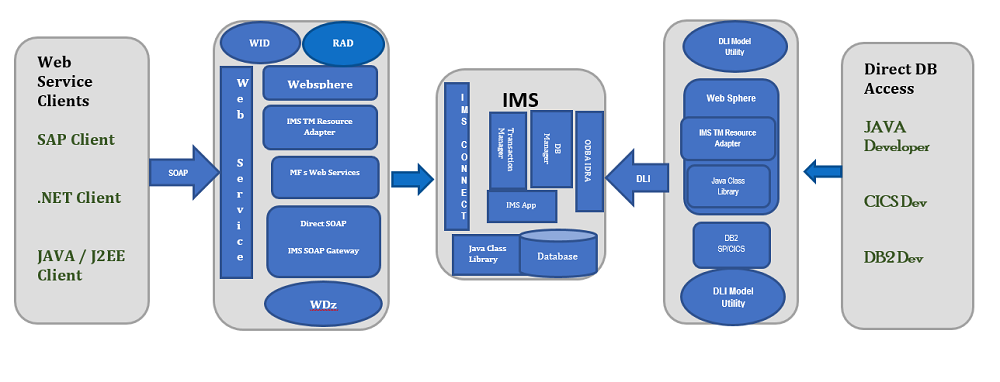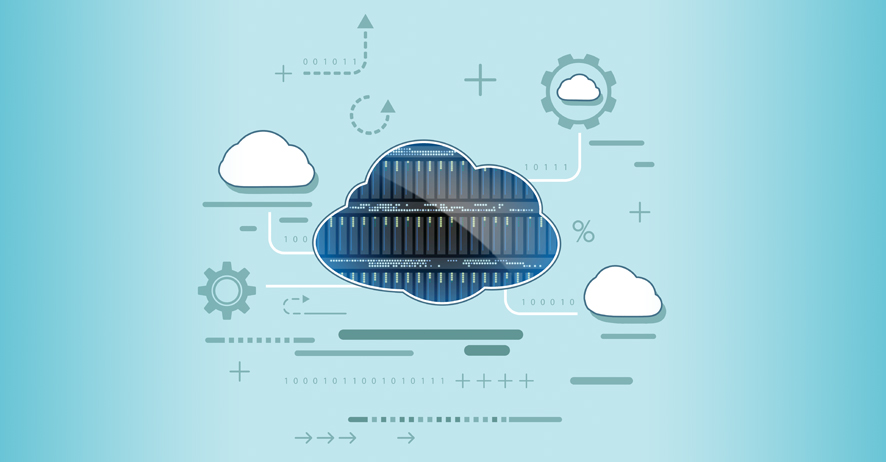Even in this era of digital transformation, Mainframes continues to hold significant part of world’s data and business transactions. While Mainframes’ advantages of reliability, security and scalability continues to be top priorities, most of today’s customers started exploring possibilities of Mainframe Modernization.
Why to migrate?
Major factors that make the Mainframe Customers opt for Migration are Huge Infrastructure and Application Platform Costs & Maintenance, Limited Flexibility, Lack of Integration and Web Capabilities, Shrinking labour pool expertise on legacy systems etc.
Migration Methodologies
Some of popular Migration methodologies:
1. Re-Hosting:
This involves taking the source code and data for an application on one Platform (IBM Mainframe) and porting it to deploy on a different Platform. Thru this high maintenance cost of keeping the application in Mainframes is reduced.
2. Re-Write:
Requirements are captured for each application from Business and IT SMEs, re-write the code in legacy into the new language (target) and develop the application from scratch in the modern technology platform. This is beneficial functionally, but takes longer duration.
3. Re-Engineer:
Here the existing applications are reverse engineered thru thorough analysis on business functionality, technical characteristics and data flow.
4. Automated Code Migrations:
This involves usage of language translation tools to automatically translate the existing legacy code into new target language.
5. SOA Enablement:
Here Web Services are being created which processes requests from web front ends thru SOAP gateway, interacts with mainframe IMS databases thru IMS Connect
6. Replace with COTS:
In this way, legacy applications are replaced either totally or partially with Commercial Off the Shelf (COTS) software packages. Though this is very quick to implement, this is a costly option.
Current Trends
1. Mainframe --> HADOOP
Hadoop is a Java based open source software framework that supports the storage and processing of huge data in distributed computing environment. It provides enormous processing power, massive storage and can handle any number of concurrent tasks or jobs.
Options in Hadoop:
- SYNCSORT + HADOOP
- Informatica Powercenter + Apache Nifi + Hadoop
- Informatica BDE (Big Data Edition) + Hadoop
HADOOP ECOSYSTEM

Figure 1 - MAINFRAME --> HADOOP Migration
By migrating data from Mainframes to Hadoop-
- Mainframe Batch functionalities can be achieved using Pig, Hive or MapReduce resulting in huge MIPS savings
- Huge volume of legacy data can be processed using HDFS, Hive and MapReduce components of Hadoop
- Sqoop and Flume components of the Hadoop framework helps move data between Hadoop and RDBMS.
- Oozie, component of the Hadoop framework, helps schedule batch jobs just like the job scheduler in mainframes.
Benefits of HADOOP
- MIPS Cost Reduction
- Lower cost, Efficient, Quick
- Code is easily maintainable and flexible
- Compatibility with mainframe technologies like COBOL, VSAM and others
2. Mainframe --> CLOUD
Cloud computing is the process of storing data and application on the remote servers or other computing resources, access them thru Internet on a pay for use basis. The resources can be rapidly provisioned on demand and released with very less management effort or service provider interaction.

Cloud Architecture provides needed integration of Legacy, new and cloud applications. Cloud Architecture facilitates access to data from modern devices like web, mobile and fat clients
a) Hybrid Cloud Approach
In this approach, the application remains unchanged and hosted in its original legacy environment. The Cloud architecture comes from an additional application server that is programmatically connected to the legacy environment thru existing APIs and Interfaces.
b) Full Cloud Approach
This option involves complete re-hosting. The application is migrated to a new Cloud suitable environment.
Prior to finalizing the approach thorough study need to be conducted on the complexity level of the existing System and expectations from the target Cloud
c) Mainframe to Cloud thru BLUEMIX
This is another option using IBM Platform as a Service (PaaS) that runs in the cloud and is hosted by IBM Soft Layer®, the IBM Infrastructure as a Service (IaaS) offering.

Bluemix utilizes data virtualization technology to provide access to mainframe data without
physically moving the data from the mainframe. It provides a secured gateway through which apps can fetch data from multiple sources in mainframes in real time (IMS, DB2, VSAM)
Advantages of migration to Cloud
- Flexible Infrastructure
- Scalability
- Centralized data hub
- Consolidated Workloads
- Reduced Total Cost of Ownership
3. Access Mainframe thru Web Services (SOAP gateway) using IMS CONNECT
This approach involves migration of legacy front end to user friendly web based screens which interacts with Mainframe IMS database thru Web Services and IMS Connect.

The communication from web front end to mainframe IMS DB involves the following steps
- The Web Services client application sends a SOAP message to IMS SOAP Gateway that processes the SOAP header (XML) and retrieves the appropriate correlation and connection information for the input request.
- IMS SOAP gateway sends the input XML data to IMS CONNECT using TCP/IP after adding the appropriate IMS connect header. IMS CONNECT calls the XML Adapter which in turn calls the XML converter to perform the XML to IMS application format transformation. IMS CONNECT then sends the message to IMS for further processing.
- After processing, IMS CONNECT calls the XML Adapter to transform the IMS application format response into XML. IMS CONNECT sends the output XML message back to IMS SOAP gateway using TCP/IP.
- IMS SOAP gateway wraps a SOAP header on the output message and sends it back to the client application.
Other Approaches
There are many other approaches on migration of legacy applications using latest technologies. Step by step approach must be followed for finalizing the target environment and migration strategy.
Legacy Migration Benefits
- Reduction in Maintenance cost
- User-friendly interface that requires minimal training
- Transparent processes and tools and easy maintenance
- Comprehensive documentation system with complete process knowledge
- Easy access from Internet
- Ease in deployment and enhancement of functionality
Conclusion
Prior to proceed on any modernization technique, it is required to perform comprehensive, structured and consultative approach to make a smart decision. For a portfolio of applications requiring a mix of approaches or complex projects like application consolidation, an End to End Modernization plan must be arrived at in collaboration with all stakeholders, business leaders and executives.
References
1. https://community.hortonworks.com/articles/32359/offloading-mainframe-data-into-hadoop.html
2. https://books.google.co.in/books?id=0XzJAgAAQBAJ&pg=PA174&lpg=PA174&dq=ims+connect+soap+gateway&source=bl&ots=g5AOPfDWnl&sig=17IGIWjew1I1dTDBgNDK5AuWqew&hl=en&sa=X&ved=0ahUKEwi719XN3IPUAhXBrI8KHYQbAdY4ChDoAQgmMAE#v=onepage&q&f=true
3. https://blogs.vmware.com/vfabric/2013/01/four-strategies-for-modernizing-mainframe-applications-to-the-cloud.html





